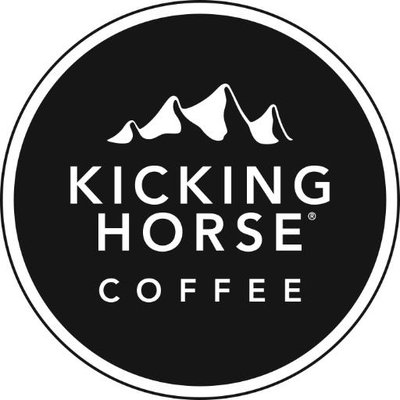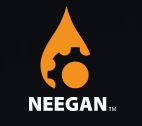Introduction
It’s a cold day, and you are at the skating rink in the park. You are waiting for your friends to show up, but at the moment you are the only one there. About half the rink is clear, and the rest is covered in snow. What would you do? You have a few choices:
- Go into the change hut where it’s warm and wait for your friends to show up.
- Practise skating on your own, so you can perfect your stops without everyone watching.
- Grab the shovel by the side of the hut and clear snow to make more room on the ice.
If you picked c), you are well on your way to becoming an entrepreneur. You are very enterprising; you see a need and you take the initiative to fill it. In this learning activity you will learn how being enterprising can lead to taking things a step further and becoming an entrepreneur.
Next, you will investigate “How to become an entrepreneur,” which takes you through a similar scenario. If you make good choices, you could go from rags to riches!
What you will learn
After completing this learning activity, you will be able to:
- identify the characteristics and skills of an enterprising person
- compare enterprising people with intrapreneurs
- develop a profile of an enterprising person
- analyze the personal benefits of being an enterprising person
- distinguish between an entrepreneur and an enterprising person
- develop a profile of a typical entrepreneur by reading about a diverse group of successful entrepreneurs
Characteristics and skills of enterprising people
A person is enterprising when they show initiative and attempt to improve things or situations without being asked.
| Enterprising Person | Non-Enterprising Person |
|---|---|
| Tries to fix or solve problems when they see them | Lets others take initiative to fix/solve a problem |
| Sticks their neck out and risks failure or ridicule | Rarely takes risks because of fear |
| Looks ahead to try and predict all positive and negative outcomes of a situation in order to evaluate the best path | Tends to see only negative consequences and does nothing as a result to avoid these outcomes |
| Is a change agent | Content to leave things as they find them |
Patsy George
Humanitarian Patsy George is an enterprising person. She has spent her life trying to make life better for people in Canada and around the world. Read the following profile from an article called “Freedom fighter (Opens in new window).” As you read, note how Patsy demonstrates that she is an enterprising person because she
- takes initiative
- tries to make things better
- takes risks
- shows imagination
- acts as a change agent

Try It!
Copy into your notebook and fill in the chart below. In the right-hand column, provide a concrete example from the Patsy George profile that illustrates each characteristic.
| Characteristics | Example from the Patsy George Profile |
|---|---|
| Takes initiative | “‘… concentrated … on international interests and to engage Canadians to be conscious of Canada as part of a global community.’” |
| Tried to make things better | “… peacekeeping …child soldiers … the HIV/ AIDS epidemic in Africa are some of the international matters that she is concerned with.” |
| Takes risks | “So as a young fearless student, she travelled from India to Ontario in 1960 to attend Carleton University in Ottawa.” |
| Shows imagination | “…a founding member of the Pacific Immigrant Resources Society, an immigrant settlement agency that focuses its services on women with preschool children.” |
| Acts as a change agent | “…her many awards and recognitions, the most recent of which is the esteemed Order of Canada.” |
Personal benefits of being enterprising
There is an old story involving a small truck, a driver, and a very important shipment of medical supplies that must be at the site of a major accident within the hour. The truck is 3.76 m high but must pass under a bridge where the maximum height is 3.75 m. There seems to be no way for the truck to continue, but going another route will take hours. The truck driver, however, is very enterprising. What does she do?
That’s right, she lets just enough air out of the tires to lower the truck by 2 cm.
There are many benefits to being enterprising. You get things done. You find creative solutions to problems. You are almost always in control of the situation, and don’t let the situation control you. You always leave things better than you found them and you possess a skill that makes you very employable.

You will get things done
Without enterprising people, we wouldn’t have the wheel, fire, and other inventions and discoveries. Enterprising people do things. When many others give up, they don’t. They see problems as challenges, as puzzles to be solved. They accomplish something.
Many people dream of a better world, or hope that good things happen. Enterprising people do more than just hope and dream. They make things happen. Patsy George didn’t just wish that immigrant women had a better life in Canada. She made sure that they did. Terry Fox didn’t just think about helping other young people with cancer after losing his leg to the disease when he was 18. Terry ran halfway across Canada with an artificial leg to raise money for cancer research. Al Gore, a former US presidential candidate, didn’t just wish there was a way to educate people about global warming. He made the movie An Inconvenient Truth to increase the public’s awareness of the issue.
The Nike slogan “Just Do It” would be a good slogan for an enterprising person.

You will find creative solutions to problems
Everyone has challenging obstacles they need to overcome in their day-to-day lives, such as needing to cook a nutritious meal after a long day at school or work, or fix a broken computer. These problems can be solved in traditional ways, with cookbooks and manuals, but enterprising people find creative solutions to their problems.
Enterprising cooks create wonderful meals from simple ingredients (this is the basis for the television program Iron Chef). If an enterprising person was to fix a computer, they might try to make it better than before by adding more memory, installing new software, and making it run faster. When faced with the challenge of having to paint his house, an enterprising Canadian named Norman Breakly invented the paint roller in 1940. The new solutions created by enterprising people become the standards for others to use to solve similar problems.

You will be in control of most situations
While others might use difficult situations as excuses for not doing something, the enterprising person will attempt to control the situation through action. Enterprising people do not have excuses as to why something can’t happen, only a time frame that outlines when it can.
For example, in the past, many people may have wished that the photos they took at a party or while on vacation could be available immediately. They may have thought, “Wouldn’t it be nice if we could see the pictures as we took them, so that if we didn’t get the scene right, we could take the picture again? It would be great to not have to buy film, load it, or wait for the pictures to be developed.” Steve Sasson thought so too, and his invention of the digital camera began in 1975. Steve saw a situation that seemed impossible, and through his enterprise made it possible.

You will leave a positive legacy
Imagine being able to say that you made the world a better place. This doesn’t mean that you are famous or wealthy, just that your contribution to the planet has been a positive one: you designed a new easy-to-use can opener, invented a safer car, came up with a cure for a disease, or simply took the initiative to shovel your elderly neighbours’ walk after each snowfall.
Marie Van Brittan Brown had been noticing that police were slow to respond to calls for help in her community. In 1969, she invented and patented a closed-circuit television system to improve the security of the neighbourhood. Her invention forms the basis for modern CCTV systems used for home security and police work today.

You will possess a skill that makes you employable
Employers love enterprising people. If your resumé includes evidence that you are enterprising, you will have a better chance of getting hired. Employers expect that enterprising people will make a difference in the workplace, and make the company better, more efficient, or more profitable. Companies like to hire enterprising people because they become intrapreneurs for them.
Try It!
List two or three of the personal benefits you might get from organizing a charity event, such as the Terry Fox Run for cancer research in their community.
| Benefits to being enterprising | Examples |
|---|---|
| You get things done | You organize the run. You raise money for a worthy cause. |
| You find creative solutions to problems | The run requires setting routes, closing streets, and obtaining sponsors and advertising. |
| You are in control of the situation, you don't let the situation control you | You plan, organize, lead, and control the run. |
| You always leave things better than you found them | The money from the run helps fund cancer research. |
| You will possess a skill that makes you employable | You show that you are enterprising and demonstrate your management skills. |

I am always doing things I can’t do. That’s how I get to do them.
Intrapreneurs
Enterprising people are always in demand in the workplace because organizations recognize that enterprising employees contribute significantly to the success of the organization.
At Unilever Canada, the recruitment strategy is to find the most enterprising people they can for the full range of positions in the organization. The following excerpt is from the “Why Join Us” section of Unilever’s website:
Enterprising people
Our success depends on new ideas, so we do everything to ensure that enterprising people excel. Unilever is home to some of the most innovative, inspiring people in the industry. Working with us means working with people who have a passion for achievement, strive for outstanding results and build effective relationships inside and outside our company.
Space to be yourself
We recruit people from a diversity of backgrounds and cultures, and support them all in realising their potential. We value their differences—after all, as a business we need to be as diverse as our millions of consumers around the world.
Source: from the “Why Join Us” section of Unilever’s website
Enterprising people in the workplace are sometimes called “intrapreneurs.” These are people who turn their ideas into profitable products or services for their employer by engaging in enterprising behaviour. Intrapreneurs are often expected to come up with new ideas, especially those employed in the research and development section of a company. Sometimes employees are encouraged to take time from their ongoing projects and work on new products or ideas. Other employees simply see how things could be better in the business and propose changes.
Intrapreneurs are rarely found in traditional, conservative organizations. They work much better in more modern, project- or task-oriented firms. Apple, 3M, Kodak, and hundreds of other firms that are leaders in their field are ahead of the competition precisely because their structures nurture and support intrapreneurs.

Intrapreneurs are different from enterprising people because they are hired and paid specifically to be enterprising by the company they work for. Enterprising people are simply people who are enterprising as part of their nature. It is who they are.
Steve Sasson invented the digital camera while working for Kodak. Michael James Delligatti worked for McDonalds when he developed the Big Mac. Art Fry was an employee of 3M when he invented Post-it Notes. Most of the time intrapreneurs do not make extra money from their invention (although they may receive a special bonus for their success). It is expected of them. Companies like 3M encourage their employees to steal time, materials, and equipment from other departments and spend up to 15 percent of their week on these unsanctioned projects. Google is famous for their concept of “20% time” that encourages employees to spend up to this amount of their time on projects that are interesting to them and that they feel will benefit the company. Products like Gmail and GoogleNews have come out of this program.
These initiatives reflect these innovative companies’ core values, and are the main reason for their successes.
Possibly the most fully developed of the intrapreneurial activities are skunk works.
These are dedicated teams that are given total independence, special company facilities, and very special status. They are asked to develop a specific secret product. Steve Jobs, Apple’s co-founder and leader, was a true believer in the intrapreneurial power of skunk works.
One of Apple’s skunk works teams developed the iPod.

Tony Fadell and Jonathan Ive:
The iPod intrapreneurs
Tony Fadell was interested in computers from an early age. He graduated from the University of Michigan with a degree in Computer Engineering, and worked for a variety of computer firms. Eventually he ended up at Apple, where his enterprising spirit and amazing grasp of computer technology made him a natural to head the development team that designed the iPod technology.
Once the concept of a portable, hand-held MP3 player took shape (in only eight weeks according to some), a design team was created to design the final product and bring it to market. Jonathan Ive headed the design team responsible for putting together the actual iPod.
As Jonathan Ive observed at the time:
By keeping the core team small and investing significantly in tools and process we can work with a level of collaboration that seems particularly rare . . . We have little exclusively personal space . . . the memory of how we work will endure beyond the products of our work.
Try It!
What is the main difference between an enterprising person and an intrapreneur?
Answers may vary. Jacquie’s answer: An enterprising person looks for solutions to problems in all aspects of his or her life; an intrapreneur looks for solutions to problems in his or her work life.
Name and briefly describe three enterprising characteristics that either Tony Fadell or Jonathan Ive possess.
Answers may vary. Jonathan’s answer: Each of these people took initiative, tried to make things better, took risks, showed imagination, and acted as a change agent. Tony Fadell took initiative in designing the iPod, Jonathan Ive took initiative and showed creativity when he organized the amazing design team to develop the iPod. Both Tony and Jonathan have improved the world (acted as change agents and made things better) by providing people with a way to access their music on the go.
Intrapreneurs have certainly made their mark. Let’s focus now on entrepreneurs and look at some examples with which you might be familiar.
Entrepreneurs
The people who you have just read about are all very successful people. They take pride in their accomplishments and make a very comfortable living. However, they didn’t make the billions of dollars that the companies they work for made on their inventions or innovations.
An intrapreneur is someone who undertakes a new activity from within an organization. As such, they are financially limited by what their company decides to pay them. They are not, as employees, entitled to any financial benefits generated by the products, services, or technologies that they created while employees. That is the primary reason people go from being intrapreneurs to becoming entrepreneurs.
Entrepreneurs are people who create, manufacture, and/or sell products, services, and ideas on their own. They are their own boss and do not work for anyone. As a result, they are entitled to keep all of the financial rewards of their venture (other than the money they owe to investors). Simply put, an entrepreneur is someone who starts a new business venture.
The word “enterprise” comes from the French word entreprendre which means “to undertake.” An entrepreneur is someone who undertakes a new activity between him or herself and the consumer. Entrepreneur has the same root, but another prefix, entre, which means “between.”
Entrepreneurs are different from enterprising people in that they earn money from being enterprising because they have taken the risks associated with starting their own business. Being enterprising means that you have enterprising characteristics, but you do not earn your living from these characteristics. An entrepreneur is always an enterprising person, but an enterprising person isn’t always an entrepreneur.
Try It!
What are the major differences between an entrepreneur, an enterprising person and an intrapreneur?
The entrepreneur is taking on financial risk by going out and starting their own business, where the enterprising person does not.
An intrapreneur is someone who is working for someone else while developing any ideas and engaging in enterprising behaviour in order to help make the company they work for profitable.
Canadian entrepreneurs
Entrepreneurs open manufacturing businesses, wholesale and importing businesses, and retail businesses, or sometimes a combination of these. The following is a small selection of successful Canadian entrepreneurs.

lululemon athletica Inc.
Chip Wilson opened the first lululemon store in Kitsilano, a neighbourhood in Vancouver, in November of 2000. Chip had spent 20 years in the surfing and snowboarding business, utilizing British Columbia’s rolling surf and snow-covered mountains to indulge his passions, but a yoga class changed his life.
Chip was hooked on yoga from the start. He realized that most yoga clothing was made of traditional cotton, which he felt was totally inappropriate for the power yoga he was into. He was already familiar with the high-tech fabrics used for snowboarding, so he began manufacturing yoga clothing during the day, and running a yoga studio at night to generate income.
The clothing soon caught on, and lululemon’s overall philosophy was embraced by customers. As a yoga instructor, Chip was very aware of the benefits of a healthy lifestyle. From the beginning, lululemon’s idea was to encourage customers to eat better, exercise more, and feel more positive about themselves. lululemon can now be found in over 350 locations in the United States, Canada, Australia, New Zealand, the United Kingdom, Singapore, Hong Kong, Germany and Puerto Rico as well as online. They have also expanded to include a second brand called ivivva athletica, targeted at younger girls.

Kicking Horse Coffee
Elana Rosenfeld and her partner Leo Johnson moved to the small town of Invermere in the Rocky Mountains of British Columbia. They had run a café, but were frustrated by the inability of anyone to supply good coffee beans.
Specialty coffee was becoming popular, as were organic products so they put these two ideas together, and, because of their ethical nature, added fair trade to the mix (fair trade companies pay fair prices to producers in less economically developed nations).
They were certainly perceptive. Initially they expected (hoped) to sell 350 lb. of coffee per week. In the Globe and Mail’s October 2016 issue of the Report on Business, it’s stated that Kicking Horse now sells over seven million pounds of coffee annually (that’s almost 400 times what they were hoping for back when they started!). The dedication to the principles of environmentally friendly, organic, and fair trade has required a great deal of extra vigilance and hard work, but it is also the root of the company’s success.

Robeez Footwear
In 1994, Sandra Wilson had a husband, Jim, and a young son, Robert, but no job. She had been let go from her job in the airline industry. Sandra wanted to earn extra money as well as spend time with her son, so she decided that her next job would be a home-based business, if she could find a good idea.
She decided to make Robert some soft-soled shoes made from soft leather and made them colourful since kids like bright colours. Sandra discovered that Robert walked better in his new shoes because he could grip the floor with his toes. She wondered if she’d found the product she was waiting for, and thought that other moms might like her shoes for their own children. She called the shoes “Robeez” after her son, made 20 prototypes, and looked for orders.
She didn’t have to look far or for long. Her initial display at the 1994 Vancouver Gift Show (a trade show for stores that carry gifts) generated orders for her product, and 15 retailers signed up to sell her product. By 2006, Robeez annual sales were over $15 million. In September 2006, the company was acquired by Stride Rite Corporation, a US footwear company for over $30 million.

Neegan Development Corporation Ltd.
David Tuccaro is a true entrepreneur. He bought Neegan Development Corporation Ltd., the earthmoving and mining services firm, in 1991, after working a year as the company’s president. He turned the struggling $2-million concern into a robust $10-million company by 2003.
A member of the Mikisew Cree Band, the Fort McMurray businessman is using his business expertise and his cultural knowledge to become a key local ally for Syncrude Canada, the multi-billion-dollar corporation spearheading the development of northern Alberta’s Athabasca oil sands. Energy, forestry, or mining companies have an impact on Indigenous communities every day, and Tuccaro brings valuable advice and expertise that help Syncrude negotiate fair dealings with the Indigenous population.
As an advocate of using local labour, Tuccaro is proud of the fact that Neegan is 70 percent staffed by Indigenous workers. He is committed to the Indigenous community, and has the respect and trust of its leaders. Tuccaro’s Indigenous roots make him much more sensitive to the needs of local Indigenous bands, and his position as the CEO and owner of a major Alberta construction and mining company make him uniquely suited to make an impact on the prosperity of the area.
Indigenous entrepreneur profile: Donald Hanson
Take a moment now to read the article “Aboriginal entrepreneurship profile: Donald Hanson (Opens in new window)” by Joseph Quesnel, a research associate at the Atlantic Institute for Market Studies. Create and complete a table like this one, with skills and attributes in the appropriate column. Add any other skills you think are important for an entrepreneur. Here are some skills you might consider using in your table: business skills, competitive skills, creativity skills, decisiveness, determination, discipline, drive, flexibility, interpersonal (people) skills, motivation, money management skills, negotiating skills, open-mindedness, passion, persuasiveness, risk tolerance, or excellent work ethic.
| My skills | Shared skills | Donald Hanson's skills |
|---|---|---|
Reflection
Are there any skills described in this article upon which you could improve?
Research
| My skills | Shared skills | Donald Hanson's skills |
|---|---|---|
Research an entrepreneur you find fascinating and complete the activity. Create and complete a table like this one. Place the skills and attributes in the appropriate column. Add any other skills you think are important.
Reflection
Are there any skills found in the “Your chosen entrepreneur” column upon which you could improve?
Conclusion
There are differences between enterprising people, intrapreneurs, and entrepreneurs. The rest of this course concentrates on entrepreneurs.


